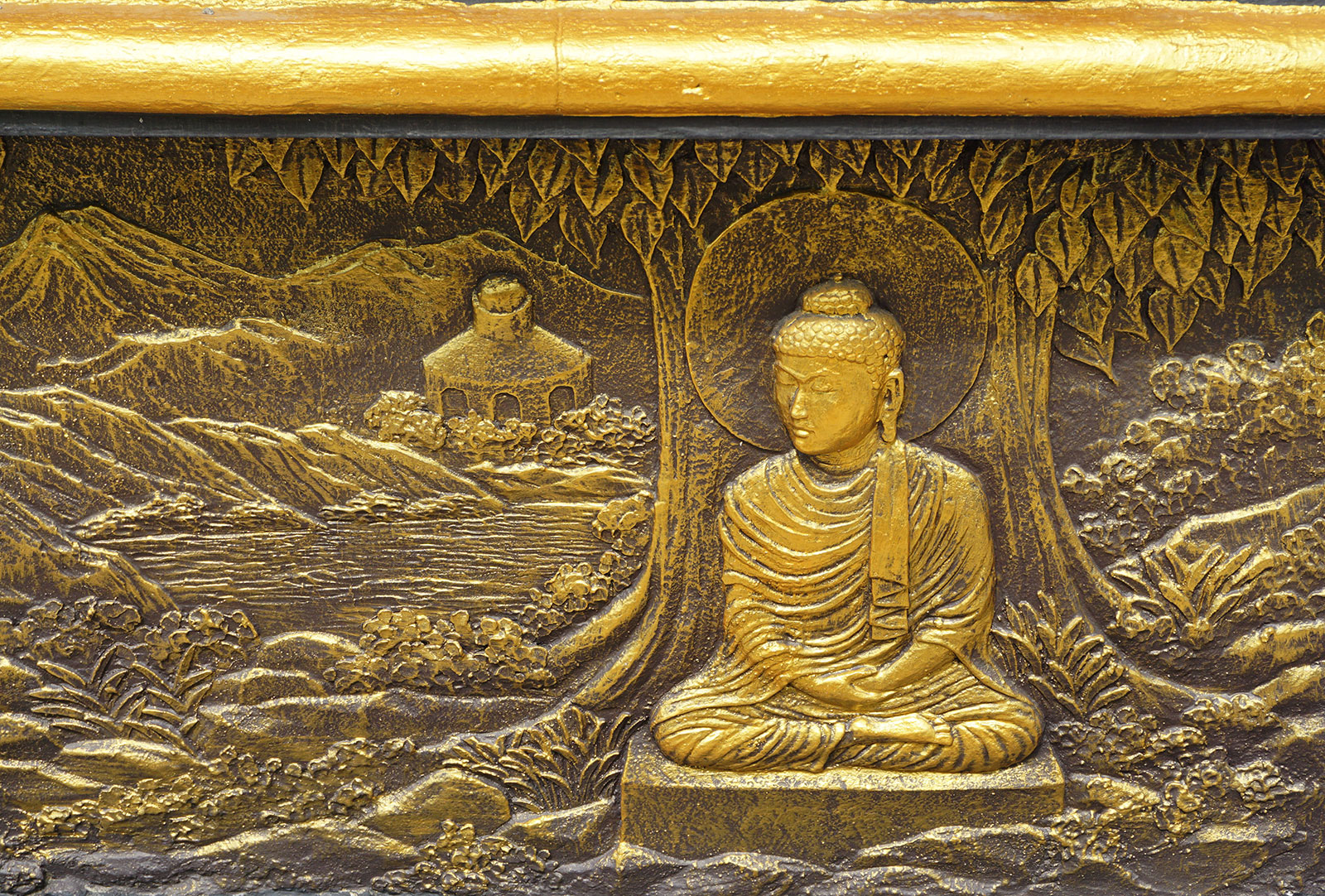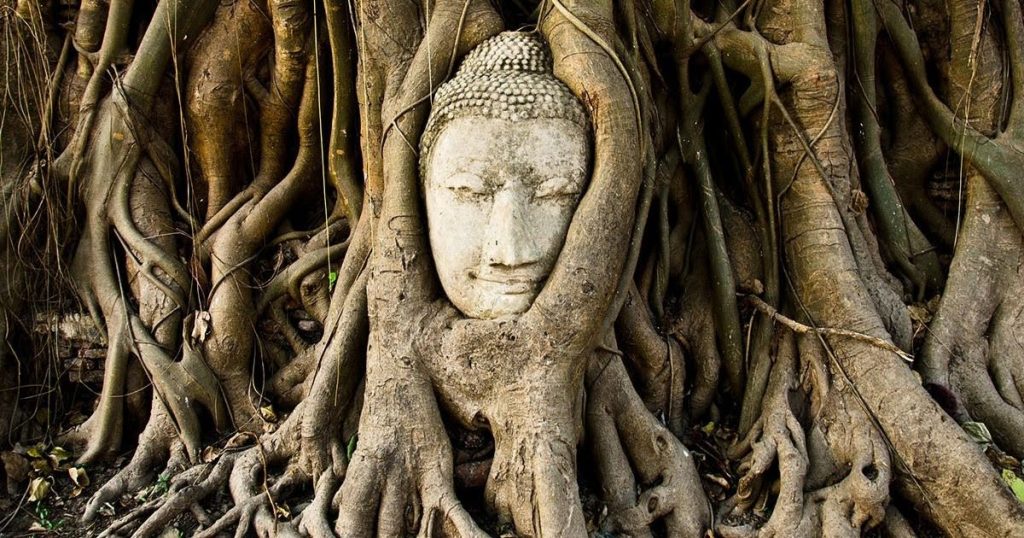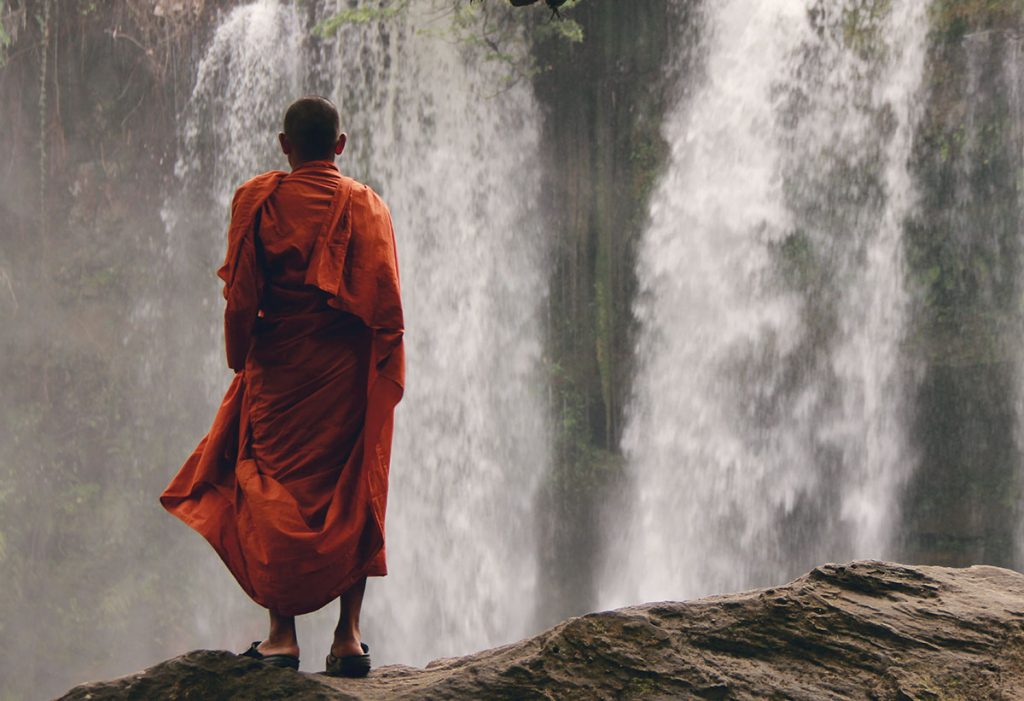
Buddhism is a religion that was founded by Siddhartha Gautama (“the Buddha”) more than 2,500 years ago in India. With about 470 million followers, scholars consider Buddhism one of the major world religions. The religion has historically been most prominent in East and Southeast Asia, but its influence is growing in the West. Many Buddhist ideas and philosophies overlap with those of other faiths.


Buddhism Beliefs
Some key Buddhism beliefs include:
- Followers of Buddhism don’t acknowledge a supreme god or deity. They instead focus on achieving enlightenment—a state of inner peace and wisdom. When followers reach this spiritual echelon, they’re said to have experienced nirvana.
- The religion’s founder, Buddha, is considered an extraordinary man, but not a god. The word Buddha means “enlightened.”
- The path to enlightenment is attained by utilizing morality, meditation and wisdom. Buddhists often meditate because they believe it helps awaken truth.
- There are many philosophies and interpretations within Buddhism, making it a tolerant and evolving religion.
- Some scholars don’t recognize Buddhism as an organized religion, but rather, a “way of life” or a “spiritual tradition.”
- Buddhism encourages its people to avoid self-indulgence but also self-denial.
- Buddha’s most important teachings, known as The Four Noble Truths, are essential to understanding the religion.
- Buddhists embrace the concepts of karma (the law of cause and effect) and reincarnation (the continuous cycle of rebirth).
- Followers of Buddhism can worship in temples or in their own homes.
- Buddhist monks, or bhikkhus, follow a strict code of conduct, which includes celibacy.
- There is no single Buddhist symbol, but a number of images have evolved that represent Buddhist beliefs, including the lotus flower, the eight-spoked dharma wheel, the Bodhi tree and the swastika (an ancient symbol whose name means “well-being” or “good fortune” in Sanskrit).
Founder of Buddhism
Siddhartha Gautama, the founder of Buddhism who later became known as “the Buddha,” lived during the 5th century B.C.
Gautama was born into a wealthy family as a prince in present-day Nepal. Although he had an easy life, Gautama was moved by suffering in the world.
He decided to give up his lavish lifestyle and endure poverty. When this didn’t fulfill him, he promoted the idea of the “Middle Way,” which means existing between two extremes. Thus, he sought a life without social indulgences but also without deprivation.
After six years of searching, Buddhists believe Gautama found enlightenment while meditating under a Bodhi tree. He spent the rest of his life teaching others about how to achieve this spiritual state.
Buddhism History
When Gautama passed away around 483 B.C., his followers began to organize a religious movement. Buddha’s teachings became the foundation for what would develop into Buddhism.
In the 3rd century B.C., Ashoka the Great, the Mauryan Indian emperor, made Buddhism the state religion of India. Buddhist monasteries were built, and missionary work was encouraged.
Over the next few centuries, Buddhism began to spread beyond India. The thoughts and philosophies of Buddhists became diverse, with some followers interpreting ideas differently than others.
In the sixth century, the Huns invaded India and destroyed hundreds of Buddhist monasteries, but the intruders were eventually driven out of the country.
Islam began to spread quickly in the region during the Middle Ages, forcing Buddhism into the background.
Types of Buddhism
Today, many forms of Buddhism exist around the world. The three main types that represent specific geographical areas include:
- Theravada Buddhism: Prevalent in Thailand, Sri Lanka, Cambodia, Laos and Burma
- Mahayana Buddhism: Prevalent in China, Japan, Taiwan, Korea, Singapore and Vietnam
- Tibetan Buddhism: Prevalent in Tibet, Nepal, Mongolia, Bhutan, and parts of Russia and northern India
Each of these types reveres certain texts and has slightly different interpretations of Buddha’s teachings. There are also several subsects of Buddhism, including Zen Buddhism and Nirvana Buddhism.
Some forms of Buddhism incorporate ideas of other religions and philosophies, such as Taoism and Bon.
Dharma
Buddha’s teachings are known as “dharma.” He taught that wisdom, kindness, patience, generosity and compassion were important virtues.
Specifically, all Buddhists live by five moral precepts, which prohibit:
- Killing living things
- Taking what is not given
- Sexual misconduct
- Lying
- Using drugs or alcohol
Buddha Quotes
Gautama traveled extensively, giving sermons on how to live and achieve enlightenment. Some popular quotes commonly attributed to Buddha include:
“Meditation brings wisdom; lack of meditation leaves ignorance.”
“If anything is worth doing, do it with all your heart.”
“Better than a thousand hollow words, is one word that brings peace.”
“The root of suffering is attachment.”
“People with opinions just go around bothering each other.”
Four Noble Truths
The Four Noble Truths, which Buddha taught, are:
- The truth of suffering (dukkha)
- The truth of the cause of suffering (samudaya)
- The truth of the end of suffering (nirhodha)
- The truth of the path that frees us from suffering (magga)
Collectively, these principles explain why humans hurt and how to overcome suffering.
Eightfold Path
The Buddha taught his followers that the end of suffering, as described in the fourth Noble Truths, could be achieved by following an Eightfold Path.
In no particular order, the Eightfold Path of Buddhism teaches the following ideals for ethical conduct, mental disciple and achieving wisdom:
- Right understanding (Samma ditthi)
- Right thought (Samma sankappa)
- Right speech (Samma vaca)
- Right action (Samma kammanta)
- Right livelihood (Samma ajiva)
- Right effort (Samma vayama)
- Right mindfulness (Samma sati)
- Right concentration (Samma samadhi)
Buddhist Holy Book
Buddhists revere many sacred texts and scriptures. Some of the most important are:
- Tipitaka: These texts, known as the “three baskets,” are thought to be the earliest collection of Buddhist writings.
- Sutras: There are more than 2,000 sutras, which are sacred teachings embraced mainly by Mahayana Buddhists.
- The Book of the Dead: This Tibetan text describes the stages of death in detail.
Dalai Lama

The Dalai Lama is the leading monk in Tibetan Buddhism. Followers of the religion believe the Dalai Lama is a reincarnation of a past lama that has agreed to be born again to help humanity. There have been 14 Dalai Lamas throughout history.
The Dalai Lama also governed Tibet until the Chinese took control in 1959. The current Dalai Lama, Lhamo Thondup, was born in 1935.
Buddhist Holidays
Every year, Buddhists celebrate Vesak, a festival that commemorates Buddha’s birth, enlightenment and death.
During each quarter of the moon, followers of Buddhism participate in a ceremony called Uposatha. This observance allows Buddhists to renew their commitment to their teachings.
Source https://www.history.com/topics/religion/buddhism
There will live webcasts of His Holiness the Dalai Lama’s dialogue with youth peacebuilders organized by the United States Institute of Peace in Dharamsala, HP, India on October 23-24, 2019. https://www.dalailama.com/live
If every 8 year old in the world is taught meditation, we will eliminate violence from the world within one generation
“Generally speaking, our mind is predominantly directed towards external objects. Our attention follows after the sense experiences. It remains at a predominantly sensory and conceptual level. In other words, normally our awareness is directed towards physical sensory experiences and mental concepts. But in this exercise, what you should do is to withdraw your mind inward; don’t let it chase after or pay attention to sensory objects. At the same time, don’t allow it to be so totally withdrawn that there is a kind of dullness or lack of mindfulness. You should maintain a very full state of alertness and mindfulness, and then try to see the natural state of your consciousness—a state in which your consciousness is not afflicted by thoughts of the past, the things that have happened, your memories and remembrances; nor is it afflicted by thoughts of the future, like your future plans, anticipations, fears, and hopes. But rather, try to remain in a natural and neutral state.”
“This is a bit like a river that is flowing quite strongly, in which you cannot see the riverbed very clearly. If, however, there was some way you could stop the flow in both directions, from where the water is coming and to where the
water is flowing, then you could keep the water still. That would allow you to see the base of the river quite clearly. Similarly, when you are able to stop your mind from chasing sensory objects and thinking about the past and future and so on, and when you can free your mind from being totally ‘blanked out’ as well, then you will begin to see underneath this turbulence of the thought processes. There is an underlying stillness, an underlying clarity of the mind. You should try to observe or experience this …” ~ Dalal Lama
